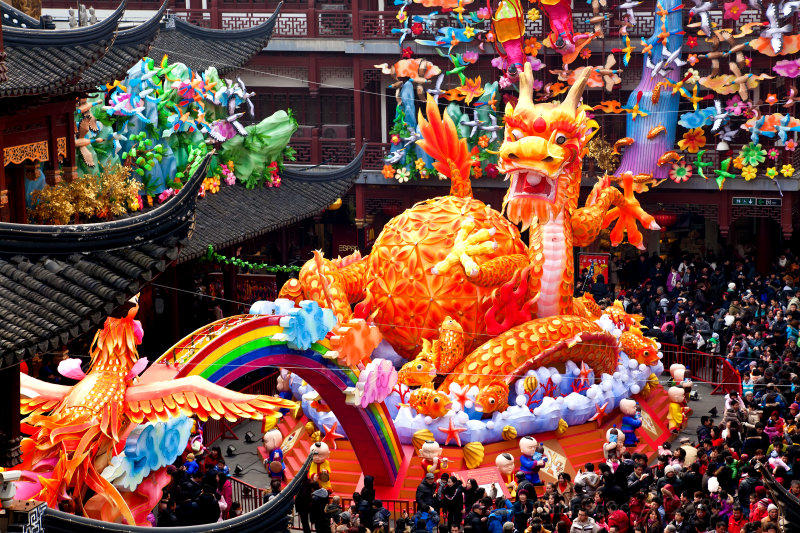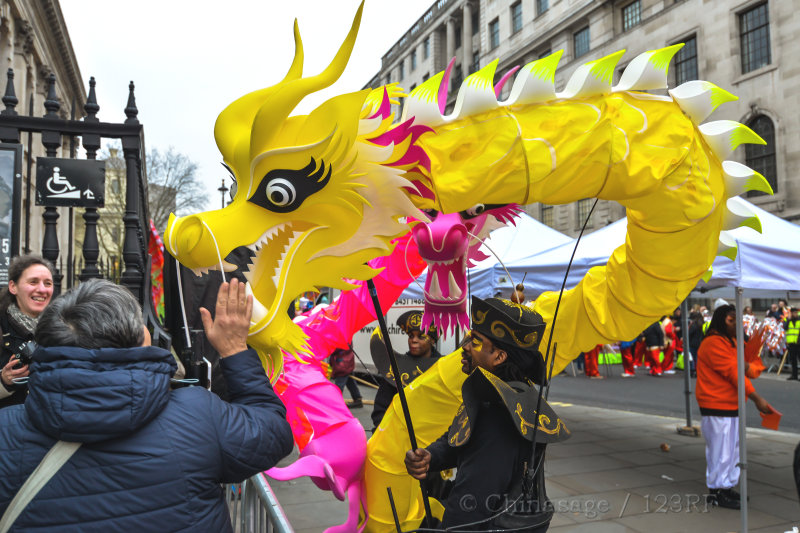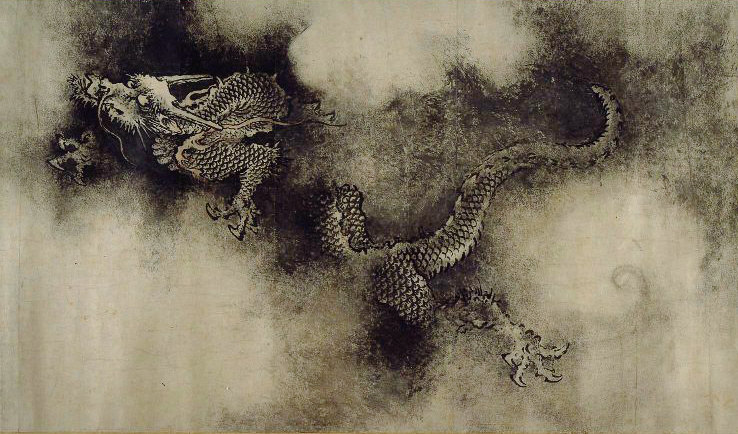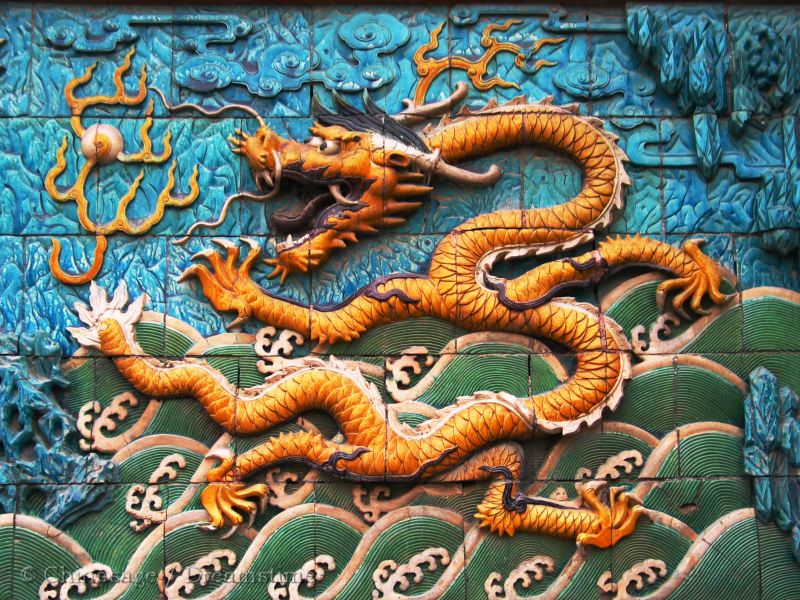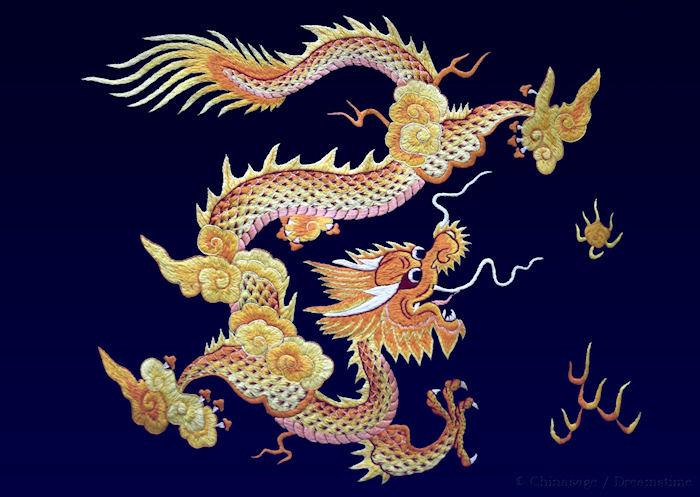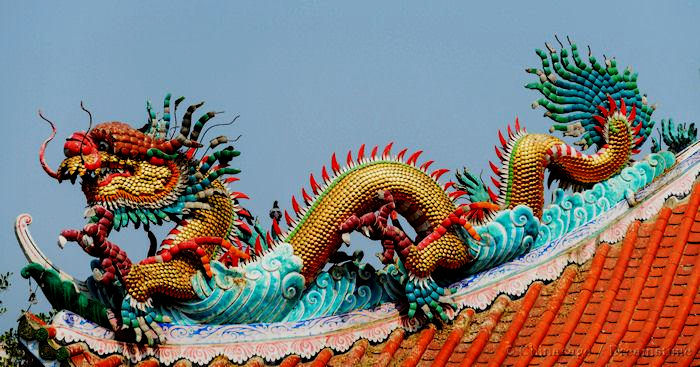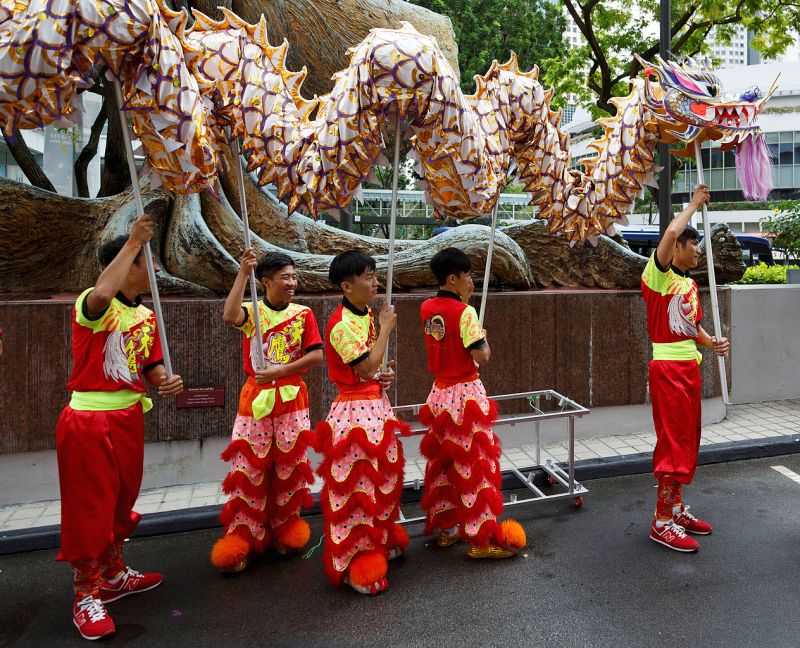Year of the Dragon
Chinese New Year is on the 10th February 2024 and heralds in the Chinese year 4722.
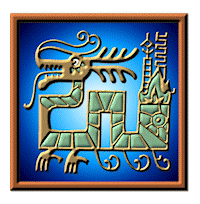
It is a 甲辰 jiǎ chén Dragon year and is associated with the wood element in the five element system and yang rather than yin. It is the 41st year of the current 60 year cycle.
Noted anniversaries in 2024 include the death of Marco Polo in 1324 (700 years ago), the death of the great Qing Emperor Yongle in 1424 (600 years ago).
All about dragons
Dragons as evil, fire-breathing fiends? Not in China, where they are considered powerful creatures, masters of water, but generally helpful and a very welcome sight. Yet even BBC documentaries cannot resist showing a fierce dragon breathing deadly flames to introduce their series about China. This all came about when the first westerners visited and saw a scaly creature on temples, embroidery, flags, pottery and paintings that they thought resembled the vicious monster that they knew back home as a ‘dragon’.
At the time that the legendary Cadmus was sowing dragon’s teeth in ancient Greece to give birth to the fierce race of Thebans 2,500 years ago, the Chinese were already venerating dragons and like the Thebans, some believed that they themselves were descended from dragons. Depictions of the dragon go back at least 6,000 years. A dragon is said to be made up of nine different creatures: camel (head), deer (horns), rabbit (eyes), cow (ears), snake (neck), frog (belly), carp (scales), hawk (claws) and tiger (palm). It has whiskers, a beard and eighty-one (9x9) scales running down its spine. The repeated use of nine comes from its use as the imperial number. As the dragon is so powerful, auspicious and benevolent it came naturally to be associated with the emperor. In the yin-yangsystem of opposites a dragon is the epitome of yang: male, active and strong. The emperor ruled from the ‘Dragon Throne’ and a dragon was his emblem on the Chinese flag.
Dragons are masters of the air and waters and bringers of life-giving rain. The typhoons (台风 tái fēng in Chinese) that frequently batter the south-east mark the passage of an angry dragon king. The belief in the actual existence of dragons remained strong. As recently as 1912, Yuan Shikai, after he had seized the Dragon Throne, sent out search parties to look for dragons, as a sighting would have legitimized his rule.
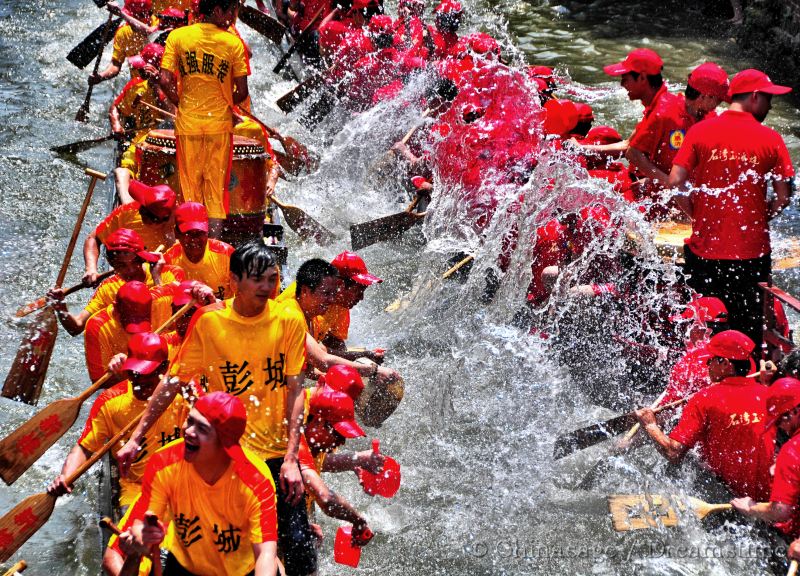
Dragon boat race
The affection for, rather than fear of dragons is evident at a major Chinese festival. The Dragon Boat Festival is held on the fifth day of the fifth lunar month in the traditional calendar, making it fall around mid summer’s day. All around the world teams of rowers compete in tournaments on this day. In ancient times it was when a sacrifice was made to persuade the dragon kings to bring the rains essential for a bountiful harvest. In those early days some poor victim was ritually drowned in a river to show due deference. In more compassionate times the festival became a search for the body of the poet Qu Yuan (340–278BCE) who, rather than subject himself to unjust rule, drowned himself in the Miluo river. Boats came out to look for him and the annual commemoration of this event became the modern festival.
Nine Dragons (九龙 jiǔ lóng) are extremely propitious as nine is the imperial number and very yang; Kowloon, part of Hong Kong means ‘nine dragons’ in Cantonese.
Feng shui favors sites with a ‘hidden dragon’, which can be found where the form of the surrounding hills resembles a huge protecting dragon. This is also the reason for the title of the popular film ‘Crouching tiger, Hidden dragon’ - as it refers to powerful people who choose to conceal their great talents.
Dragon dance 舞龙 wǔ lóng
The dragon has a head operated by one dancer followed by a number of dancers along the body underneath a flowing red fabric held up by poles. Some dragons can be 100 yards [91 meters] long. It probably dates back to the Han dynasty (2,000) years ago. There is considerable skill to ensure head and body move together in a convincing way. Common moves are 'chasing a pearl (of wisdom)' or ball and 'threading money'. It used to be restricted for New Year celebrations but is now seen at other times but not as widely as the lion dance.
Dragon babies
As the dragon is such an important creature it takes pride of place in the Chinese zodiac where it is the only mythical animal in the twelve year sequence. Anyone born in a dragon year, particularly a ‘golden’ dragon year that occurs once every sixty years (next one in 2060), is destined to become wealthy and powerful. With the current concerns about the low birth rate in China ➚ the authorities must be hoping that couples will choose to have a child in the dragon year of 2024. In the past this has been the case as in in 2012, another dragon year, there was a 1.9% increase in births because couples wanted a ‘dragon’ child.
Loads of dragons
Here are some images of dragons and also proverbs concerning dragons, the common theme is one of power and influence.
